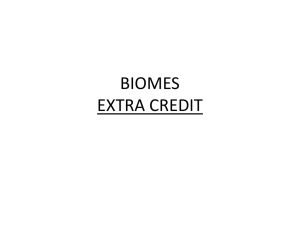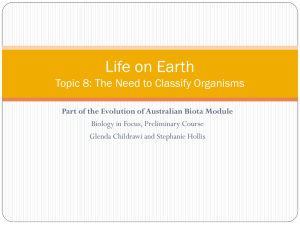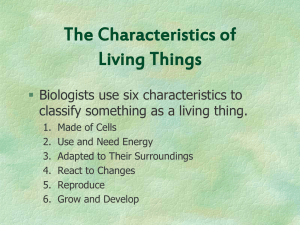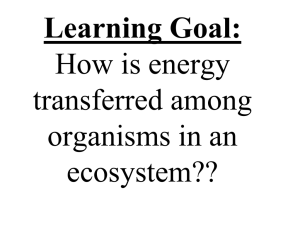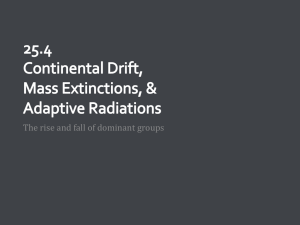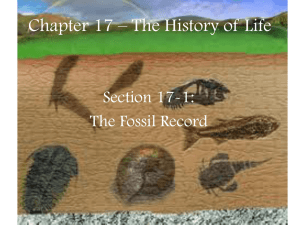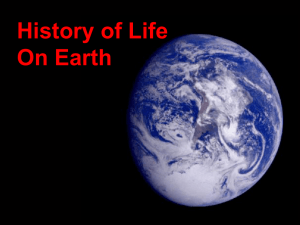Unit A Ch1 L3 Organisms from the past
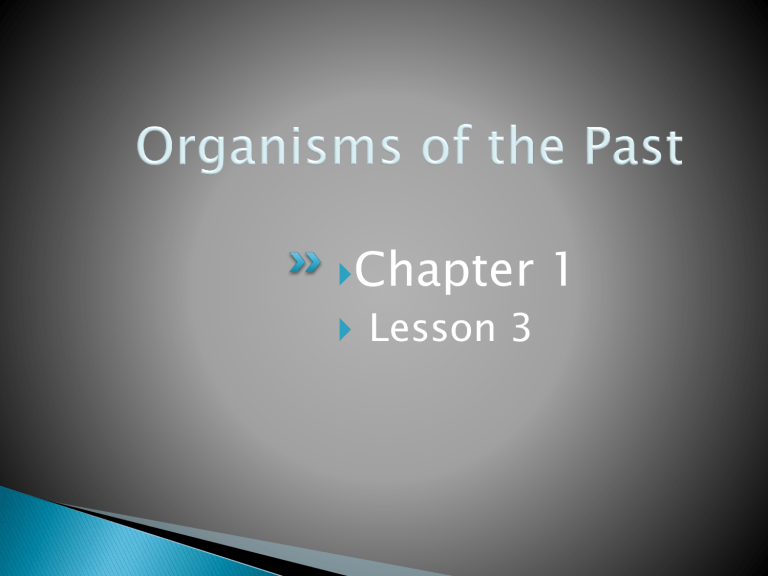
Chapter 1
Lesson 3
Students will:
◦ Explore how skeletons are used to help compare organisms.
◦ Describe evidence scientists consider to compare and classify organisms of the past.
◦ Describe reasons organisms can become extinct.
Fossil
◦ Any evidence of an organism that lived in the past.
◦
◦ Fossils are often skeletons preserved in rock.
Fossils preserved in rock.
◦ When someone discovers a new fossil, they might ask themselves:
“How would this organism fit into today’s classification system?”
They might compare the fossil with bones of similar animals living today.
◦ Evolution
Change in living things over time.
◦ Scientists must consider that organisms change over time.
For example, scientists have traced the ancestors of the modern horse back to 60 million years.
◦ One way in which they accomplished this difficult task was by comparing the fossils of skulls, teeth, and leg bones.
Based on fossil evidence, scientists think that the
Hyracotherium is an ancestor of all horses.
What similarities and differences do you see?
How did the animals’ appearance change?
◦ Another way in which fossils can be compared is by determining their age, or “how old” the fossil is.
◦ One way in which this can be determined is by studying the rock layer in which a fossil is found.
Looking at other fossils found in the same rock layer tells that the organisms lived at about the same time.
The youngest fossils are in the youngest layer, which the top layer.
The oldest fossils are in the oldest layer, which the bottom layer.
The younger fossils are found in the upper layers.
Layer A is younger than
Layers B, C, & D.
Layer B is older than Layer
A, but younger than Layers
C & D.
Layer C is older than
Layers A & B, but younger than D.
Do you think the organisms on this slide have anything in common?
Even though each animal uses these bones differently, the bones are arranged in similar ways.
Scientists use the evidence shown by limb bones when they classify organisms.
Some of their findings are surprising.
Whale bones are more closely related to humans than to sharks.
Look at the flipper bones.
They are much more like human arm bone than a shark’s fin.
Whales and humans are both mammals.
◦ Another clue to identifying similarities among organisms comes from before they were even born.
◦ Embryo: an undeveloped animal or plant.
◦ Each has backbone or spine.
◦ They both have gill slits and a tail.
◦ These features suggest that organisms are related and they are both vertebrates.
◦ An embryo changes before it is ready for the world.
◦ Some features are lost in certain animals as the embryo grows.
◦ Birds do not have gill slits when they are born.
◦ Extinct
No longer alive on Earth.
◦ To help classify extinct animals, scientists compare the fossil embryos with each other and with modern embryos.
Extinct
Tasmanian
Tiger
◦ Another clue that organisms might be related can be found in “leftover” structures.
◦ Humans don’t need a tail, but a human adult has a tailbone at the end of the spine.
Some snakes have tiny hip and limb bones.
A baleen whale has small, useless hip bones.
◦ These useless bones are clues that help classify organisms into groups.
◦ Baleen whales are probably related to organisms that have and use those bones.
Many organisms have become extinct over the years.
◦ Some scientists believe that 99 out of every 100 species that have ever lived on Earth are extinct.
Mass extinctions
◦ It is when many different species died out at about the same time.
◦ Judging from fossils, there have been many mass extinctions.
◦ The best-known mass extinction is that of the dinosaurs.
◦ They died out about 65 million years ago, along with more than half of all other animals and plant species.
Different theories of mass extinctions
◦ Giant meteorite
It hit the Earth and caused the extinction of the dinosaurs.
Evidence to support this theory was found by Walter
Alvarez and his father, Dr. Luis Alvarez.
Different theories of mass extinctions
◦ Giant meteorite
The meteorite would have created great clouds of dust that blocked sunlight.
Without sunlight, plants could not have had the food they needed to survive.
Without plants, plant-eating dinosaurs would have died.
Without them, meat-eating dinosaurs would have died.
Different theories of mass extinctions
◦ Volcanoes
Other scientists believe that many huge volcanoes erupted, creating great clouds of dust.
This theory would have had the same effect as a giant meteorite.
Different theories of mass extinctions
◦ Deadly Diseases
Other scientists believe that dinosaurs spread deadly diseases as they moved about Earth.
◦ It is possible that a combination of these events caused the extinction of the dinosaurs.
People and Extinction
People play an important in the extinction or endangerment of animals.
We:
◦ use pesticides and chemicals which destroys places where animals live today.
◦ destroy their resources.
◦ also hunt and fish.
Learning about the past helps us learn about the present.
Know how organisms have changed over time and who their ancestors were helps us to better understand the history of life on Earth.
It also helps us classify living and extinct organisms.
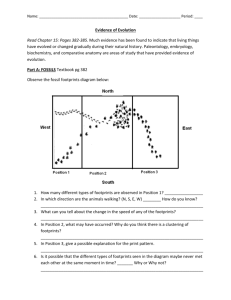



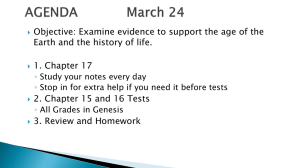

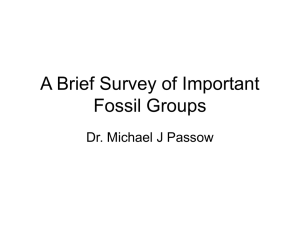


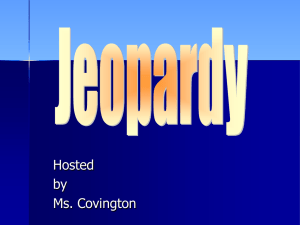

![8th_Grade_Science_EOG_Review[1]](http://s2.studylib.net/store/data/005499036_1-540adc8cddff78258f912f25485a62a4-300x300.png)
